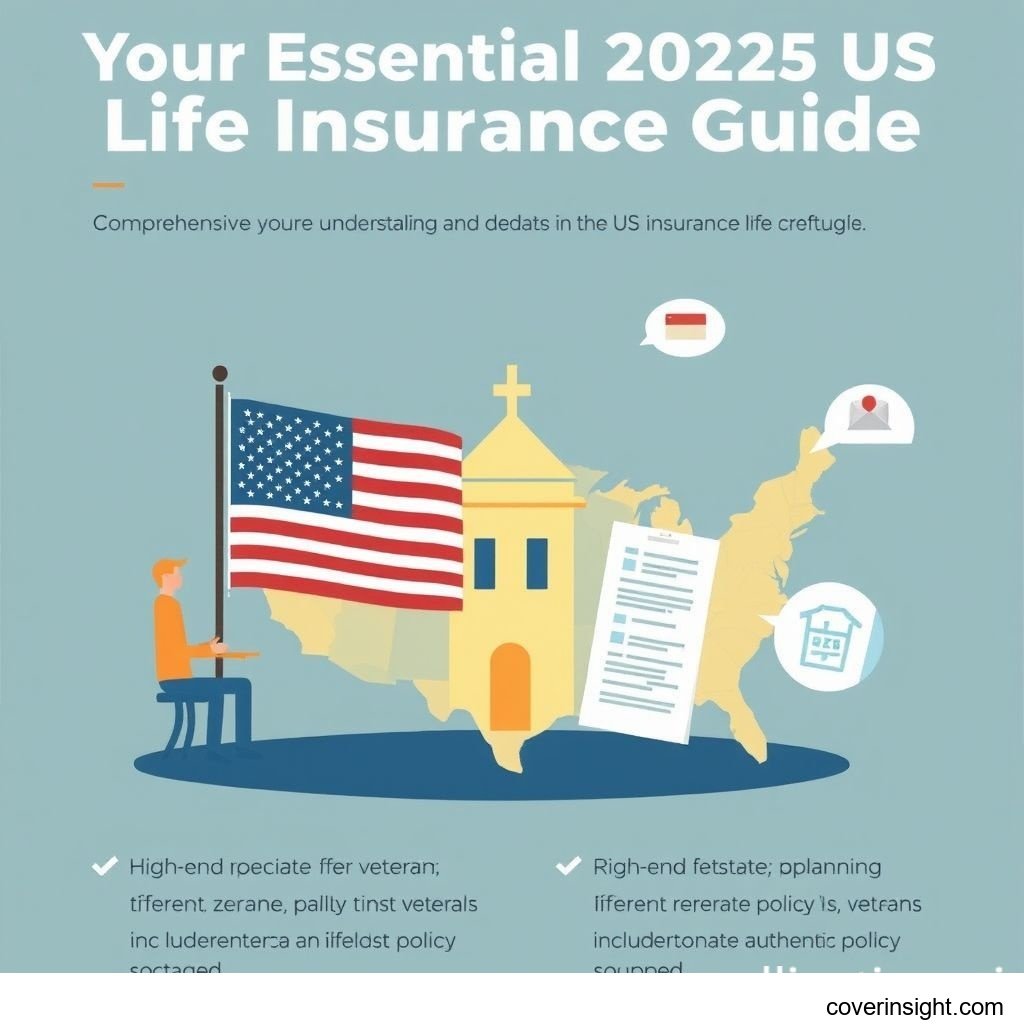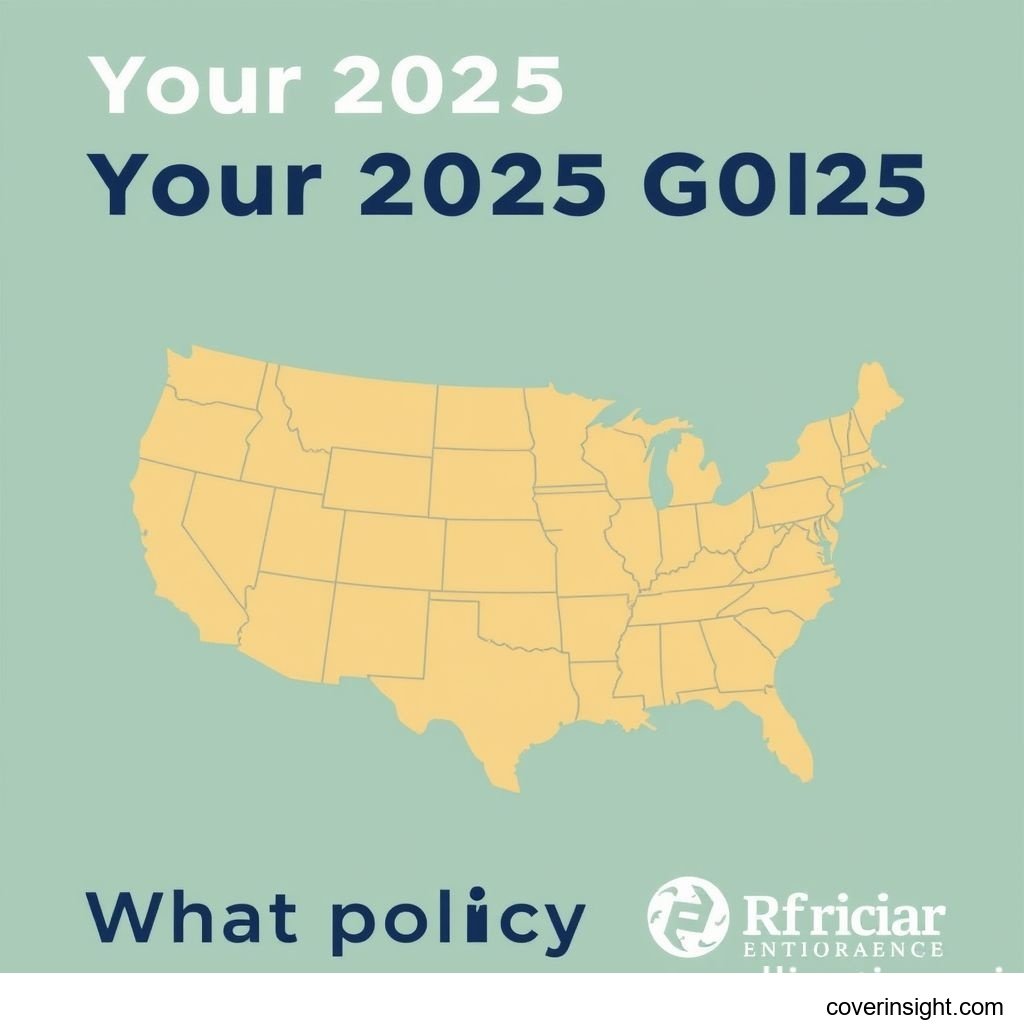Your Essential 2025 US Life Insurance Guide
Introduction
Life insurance in the US for 2025 continues to be a cornerstone of financial planning, offering a crucial safety net for families and individuals. At its core, life insurance is a contract between an insurance policyholder and an insurer, where the insurer promises to pay a designated beneficiary a sum of money (the "death benefit") upon the death of an insured person. In return, the policyholder pays a premium, either regularly or as a lump sum. This vital financial tool ensures that your loved ones are not left in a precarious financial situation should the unexpected occur, covering everything from mortgage payments and daily living expenses to educational costs and outstanding debts.
The importance of this coverage cannot be overstated. Consider the story of the Rodriguez family in Texas. After Mr. Rodriguez, the primary breadwinner, passed away unexpectedly in 2023, his life insurance policy was the buffer that allowed his wife, Maria, to maintain their home and ensure their children could continue their education without immediate financial distress. This real-world example underscores how a life insurance payout provides essential peace of mind and tangible support during a difficult time. According to LIMRA's 2023 Insurance Barometer Study, a respected source of industry insights, roughly 52% of US households had some form of life insurance coverage, highlighting its widespread recognition as a financial imperative. For more broad guidance, explore general [Insurance Resources Global], or dive deeper into specifics at [US Insurance Home].
Coverage Details
What’s Included
A typical US life insurance policy offers a death benefit paid out as a lump sum, which beneficiaries can use for any purpose. This often includes covering funeral expenses, replacing lost income, paying off mortgages or other debts, funding children's education, or even serving as an inheritance. Many policies also offer riders—additional benefits that can be added to customize coverage. These might include an accelerated death benefit (allowing early payout if diagnosed with a terminal illness), a waiver of premium (waiving premiums if the policyholder becomes disabled), or accidental death benefits. Term life insurance provides coverage for a specific period, while permanent options like whole life or universal life offer lifelong coverage and often include a cash value component that can grow over time and be borrowed against.
Common Exclusions
While comprehensive, life insurance policies do have common exclusions designed to protect the insurer from undue risk. The most significant is typically the "suicide clause," which states that if the insured dies by suicide within the first two years (this period can vary by state, but two years is common) of the policy's effective date, the death benefit may not be paid out, though premiums paid might be refunded. Other common exclusions can include death resulting from illegal activities, engaging in extremely high-risk hobbies (e.g., professional racing, unguided mountaineering) that were not disclosed or approved by the insurer, or misrepresentation on the application (providing false information about health or lifestyle). It’s crucial to read your policy carefully and be transparent during the application process to avoid future complications for your beneficiaries.
Cost Analysis
Price Factors
The cost of life insurance premiums in the US is influenced by a multitude of factors, as insurers assess the level of risk they undertake. Your age is a primary determinant; generally, the younger and healthier you are when you apply, the lower your premiums will be. Health status plays a huge role: pre-existing conditions, chronic illnesses, and even your family medical history can impact rates. Lifestyle choices, such as smoking, heavy alcohol consumption, or engaging in dangerous occupations or hobbies, will typically lead to higher premiums. The type and amount of coverage you select—a large death benefit or a permanent policy with cash value—will also significantly affect the price. For a deeper understanding of how your health might affect coverage options, you might explore resources like [Healthcare.gov].
Saving Tips
Securing affordable life insurance doesn't have to be a daunting task. One of the best saving tips is to purchase a policy when you are young and healthy. Locking in a lower rate early can lead to substantial long-term savings. Consider term life insurance if your financial obligations (like a mortgage or raising children) are time-bound, as it's generally more affordable than permanent life insurance. Quitting smoking or adopting a healthier lifestyle can also lead to reduced premiums, especially after a period of sustained improvement. It's also wise to shop around and compare quotes from multiple insurers. Don't hesitate to consult with independent insurance agents who can provide tailored advice and help you navigate the various options available across different providers. Resources like your [State Insurance Departments] can also offer consumer guides and help verify agent licenses.
FAQs
How much does what is life insurance cost?
The cost of life insurance varies widely depending on individual factors like age, health, lifestyle, the type of policy (term vs. permanent), and the coverage amount. A healthy 30-year-old might pay as little as $20-$30 per month for a 20-year term policy with a $500,000 death benefit, while an older individual with health issues could pay significantly more.
What affects premiums?
Premiums are primarily affected by your age, current health status (including medical history and pre-existing conditions), lifestyle choices (smoking, alcohol use, high-risk hobbies), the type of policy (term, whole, universal), and the death benefit amount you choose. Gender can also play a minor role, with women often paying slightly less due to longer average lifespans.
Is it mandatory?
No, life insurance is not mandatory in the United States. Unlike auto insurance, which is required in most states, or health insurance which has had varying mandates, life insurance is an optional financial product. However, many financial advisors consider it an essential component of a comprehensive financial plan for anyone with dependents or significant debts.
How to choose?
Choosing the right life insurance involves assessing your financial needs, dependents' future requirements, and budget. Calculate how much income replacement, debt coverage, and future expenses (like college tuition) your family would need. Then, decide between term (for specific periods) and permanent (for lifelong coverage with potential cash value) options. It's often beneficial to consult with a financial advisor or an independent insurance agent who can help tailor a policy to your unique circumstances and compare quotes from various providers. For regulatory oversight and consumer information, checking with the [National Association of Insurance Commissioners] is also a good step.
Consequences of no coverage?
Without life insurance, your dependents could face significant financial hardship upon your passing. This might include struggling to cover funeral costs, manage daily living expenses, pay off a mortgage or other debts, or fund educational aspirations. It can add immense financial stress to an already emotionally devastating time, potentially forcing loved ones to make difficult choices like selling assets or taking on new debt.
Author Insight & Experience
Based on my experience living in the US and navigating personal finance, one of the biggest misconceptions about life insurance is that it's either too expensive or only for the elderly. In reality, purchasing a policy when you're younger and healthier is often surprisingly affordable and offers invaluable peace of mind. I've seen firsthand how a well-chosen policy can make all the difference for families facing unexpected loss, transforming a potential financial catastrophe into a manageable transition. It's not just about protecting your loved ones; it's about honoring the life you've built and ensuring your legacy, whatever that may be, can continue.
Further reading: Insurance Resources Global
Further reading: US Insurance Home








Comments